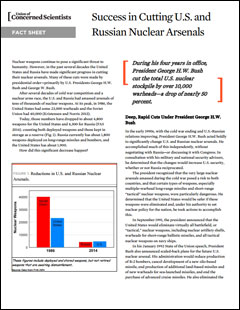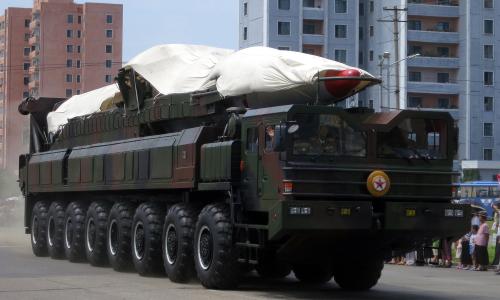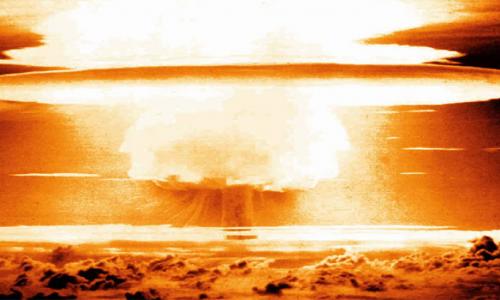The United States currently has around 4,800 nuclear weapons. About half of these are deployed among siloes, submarines, and bombers, with a total explosive yield 25,000 times higher than the bomb that dropped on Hiroshima. Russia has a similar number of weapons.
Yet despite the number of weapons we have—and their alarming capabilities—there are substantially fewer of them today than there were thirty years ago. In the mid-1980s, the number of U.S. and Soviet warheads reached a peak of about 64,000. Through decisive, independent leadership, the United States and Russia now have around 9,100 nuclear weapons—an 85 percent reduction over two and a half decades.
Reductions of this scale represent a widely shared belief that nuclear missiles and bombs decrease national safety. Often, reductions took place without protracted treaty negotiations or ratification battles in Congress, needing only a determined and willing president. The results—fewer nuclear weapons, and limitations on their future deployment—have helped reduce the risk of nuclear use.
More remains to be done. President Obama could end the country’s policy of keeping around 450 land-based missiles on hair-trigger alert, ready to launch within minutes. He could also independently cut U.S. nuclear forces to 1,000 strategic warheads, a plan the military has endorsed. These actions would increase the nation’s safety while encouraging reciprocity from Russia, even at a time of high tensions.




